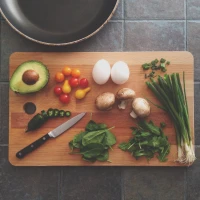Storing vegetables correctly can sometimes feel like a dark art — knowing the right temperature, humidity, and location can be the difference between crunchy, vibrant veggies and limp, lifeless produce destined for the compost. In a world where fresh, nutritious food and sustainability are paramount, understanding how to prolong the life of your vegetables in a grounded fridge comes to the fore. Embracing proper vegetable storage not only impacts the quality of your meals but also reduces food waste and saves money. The timeless struggle with wilted lettuce and sprouting onions ends here — with our Ultimate Guide to Storing Vegetables, you’ll unlock the secrets to keeping your greens greener for longer.
The Cornerstone of Vegetable Storage: Your Grounded Fridge
Your refrigerator is more than just a cooling box; it’s a sophisticated ecosystem primed for preserving freshness. Whether you’ve invested in a state-of-the-art grounded fridge or are working with a trusty kitchen stalwart, understanding its zones and how to leverage them is critical.
Understanding Your Fridge’s Climate Zones
- The Crisper Drawer: Often humidity-controlled, this is a haven for leafy greens and humidity-loving vegetables.
- The Middle Shelf: Usually the consistent temperature zone, ideal for most produce.
- The Door: Subject to temperature variations, reserve this for condiments rather than vegetables.
The Role of Temperature in Veggie Preservation
Temperature consistency is a crucial variable in the equation of vegetable freshness. Fluctuations can be detrimental, causing condensation and accelerated decay. A grounded fridge maintains a steady temperature, shielding your produce from the warm air that invades when the door swings open.
Optimum Temperature for Different Vegetables
- Leafy Greens: 35-40°F (1.7-4.4°C)
- Root Vegetables: 40-45°F (4.4-7.2°C)
- Nightshades (Tomatoes, Eggplants): 50-54°F (10-12°C) — often better outside the fridge
Strategic Vegetable Placement: A Grounded Fridge Blueprint
Knowing where to place your vegetables within the fridge’s microclimates is not just smart — it’s strategic. Here’s how to organize your veggies for maximum longevity.
Top Shelf Tactics
Relatively stable and away from raw meats, the top shelf can be ideal for herbs and mushrooms that need moderate humidity.
Middle Shelf Mastery
Use the middle shelf for vegetables that don’t fit into the crisper but still need a cool environment — like green beans or bell peppers.
Crisper Drawer Dominance
Divide your crisper drawer if possible, allocating one side for high-humidity lovers like carrots or celery and the other for low-humidity fans such as garlic or onions.
Door Shelf Dependencies
Avoid the door for vegetables; its temperature inconsistency is a gamble with their shelf life.
Specific Vegetable Storage Guidelines
Not all vegetables are created equal, and their storage needs can be as diverse as their flavors.
Leafy Greens and Lettuces
- Wrap: Ensure they’re dry and then wrap in a paper towel or a clean cloth to absorb excess moisture.
- Containers: Store loose leaves in airtight containers with a layer of paper towels for moisture control.
Root Vegetables (Carrots, Beets, Radishes)
- Trim: Remove leafy tops which can draw out moisture, making them flaccid.
- Bag It: Store in perforated plastic bags or unsealed containers to allow for airflow.
Alliums (Onions, Garlic)
- Breathable Space: Store in a mesh bag or a basket in the low-humidity drawer.
- Darkness: Light can induce sprouting, so keep them in a dark drawer.
Sensitive Nightshades (Tomatoes, Eggplants)
- Room Temperature: They do better outside the fridge in cool, ventilated spaces.
- Separate: Their ethylene production can accelerate ripening in other veggies, so keep them isolated.
Maintaining Moisture Levels for Veggie Vitality
Humidity control is the unsung hero of vegetable storage. Too little and your veggies become desiccated artifacts; too much and decay sets in like a moist curse.
The Humidity-Dial Deconstructed
Many fridges come with adjustable humidity settings on crisper drawers — from low to high. Use it to your advantage.
Signs of Improper Humidity
- Wilting: Too low humidity can leave vegetables limp.
- Mold: High humidity can encourage mold growth, ushering in premature spoilage.
How to Adjust Humidity for Veggies
- A rule of thumb is to set high humidity for leafy greens and low humidity for fruits and bulbs like onions that need drier conditions.
Expert Tips for Vegetable Storing Success
Ensure your veggies reach their full shelf-life potential with these trade secrets.
Use the “First In, First Out” Principle
- Rotate: Always move older vegetables to the front to be used first and reduce waste.
Regular Fridge Cleanups
- Inspect: Weekly inspections enable you to remove any spoiled items that could affect other produce.
- Cleanse: Wipe down shelves and drawers to eliminate bacteria and odors that can infiltrate fresh vegetables.
Avoid Vegetable Enemies: Ethylene Producers
- Separation: Items like apples and bananas produce ethylene gas, which can hasten spoiling in sensitive vegetables like leafy greens or peppers.
By implementing the knowledge and tactics discussed in this guide, your quest for fresh, crisp, and nutritious vegetables can reach new heights of success. A grounded fridge, with its consistent temperature and tailored storage areas, provides a robust arena to master the art of vegetable storage. By engaging with these storage techniques and expert tips, your culinary exploits will be met with vibrant colors and textures only fresh vegetables can impart. More importantly, these habits contribute to a healthier environment by cutting down on food waste. With this comprehensive roadmap at your disposal, embrace the savvy storage practices and let your fridge become the guardian of your vegetable’s vitality.










